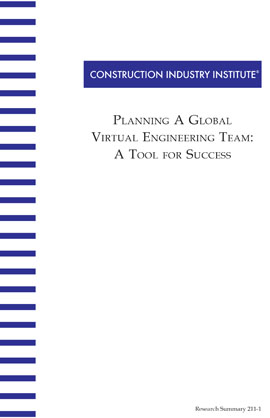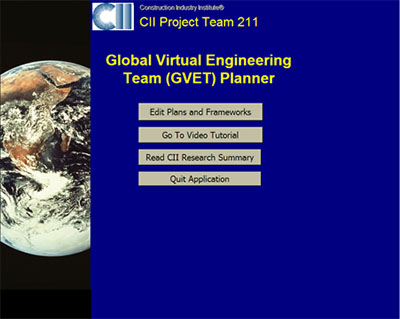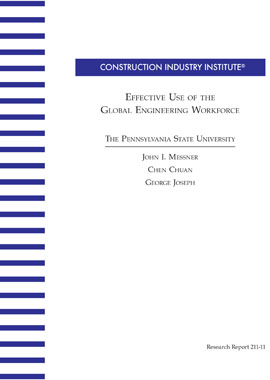
Planning A Global Virtual Engineering Team: A Tool for Success
Over the past several decades, substantial changes in the political and technological climate worldwide have enabled more widespread use of “global teams”—geographically dispersed individuals working together through electronic and wireless media to complete mutual goals. The concept of “virtual teams,” a mid-1980s concept, has also evolved with the recent surge of globalization and technological developments and has taken on a new impetus.
With their resources dispersed in various geographical locations, global companies have many challenges, both managerially and technologically. It is now possible to adopt virtual teaming strategies that improve communications and management, but these teams have cultural, economic, political, and technological aspects that must be evaluated and addressed in order to be successful.
CII established the Global Engineering Work Force Research Team to develop a detailed understanding of the critical activities required for successfully implementing a global engineering team. The goal was to develop an implementation tool to address the comprehensive issues involved in establishing successful global virtual engineering teams.
The research team has concluded its study. The final product of the team, the Global Virtual Engineering Team (GVET) Execution Planner (CII Implementation Resource 211-2), provides a vehicle for creating an execution plan to address issues related to organization, scope definition/ work sharing, communication, quality, project control, and technology at both the company and project levels. The Planner, which can be used in various phases of a project, also provides a method for capturing and managing specific lessons learned related to each category. The following chapters describe the research approach, findings, and conclusions. An Appendix provides a description of the Execution Planner. The Excel™ spreadsheets that comprise the Planner are available through CII.
Top-Rated Driving Forces (RS211-1, p. 5)
- Reduce engineering cost
- Competition
- Global (or local) customers
- Locate services close to project location
- Reduce engineering schedule
Common Success Factors (RS211-1, p. 5)
- Clear and frequent communication and periodic face-to-face
- Good communication tools and IT compatibility
- Standard work processes and communication procedures
- Clearly defined scope and expectations
- Clearly defined roles and responsibilities



